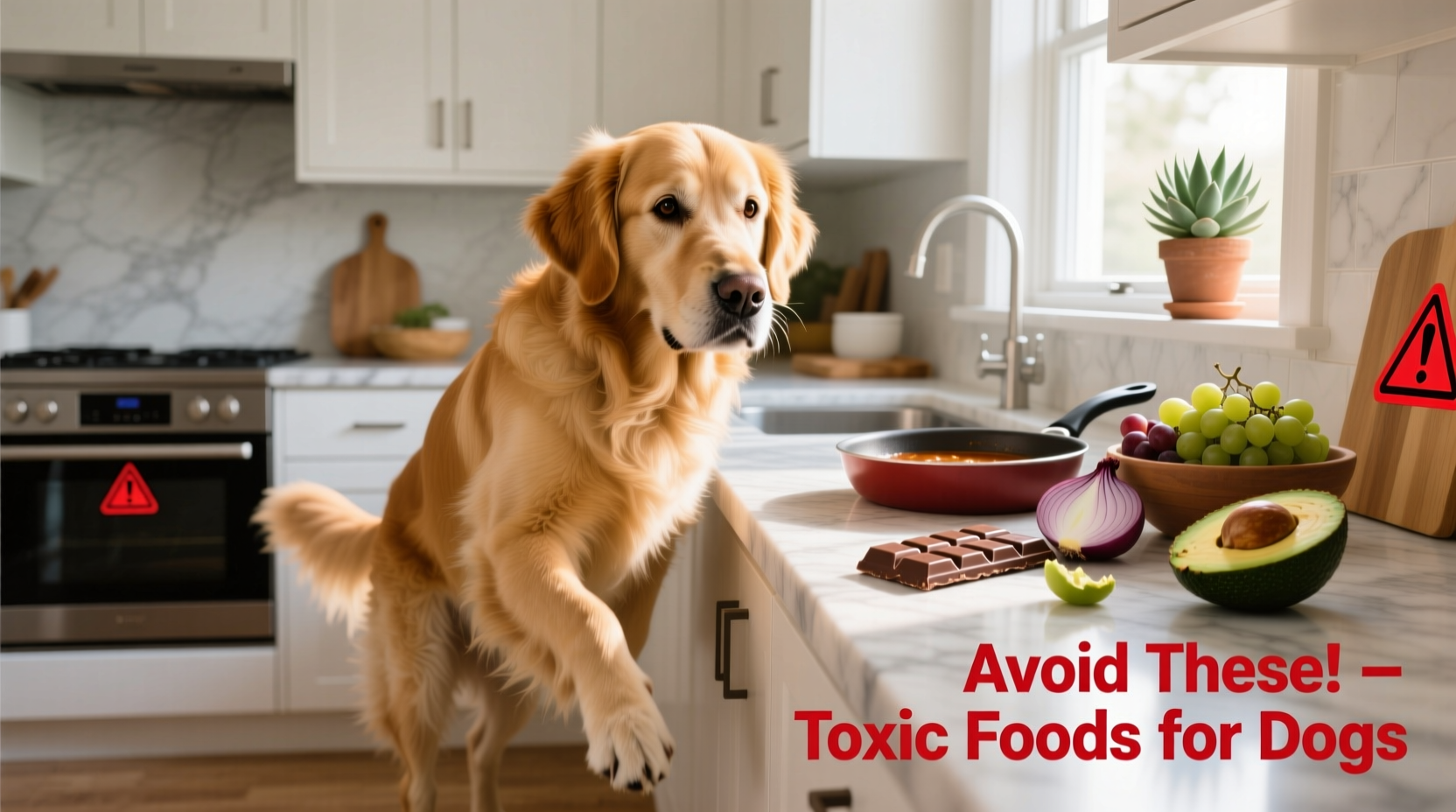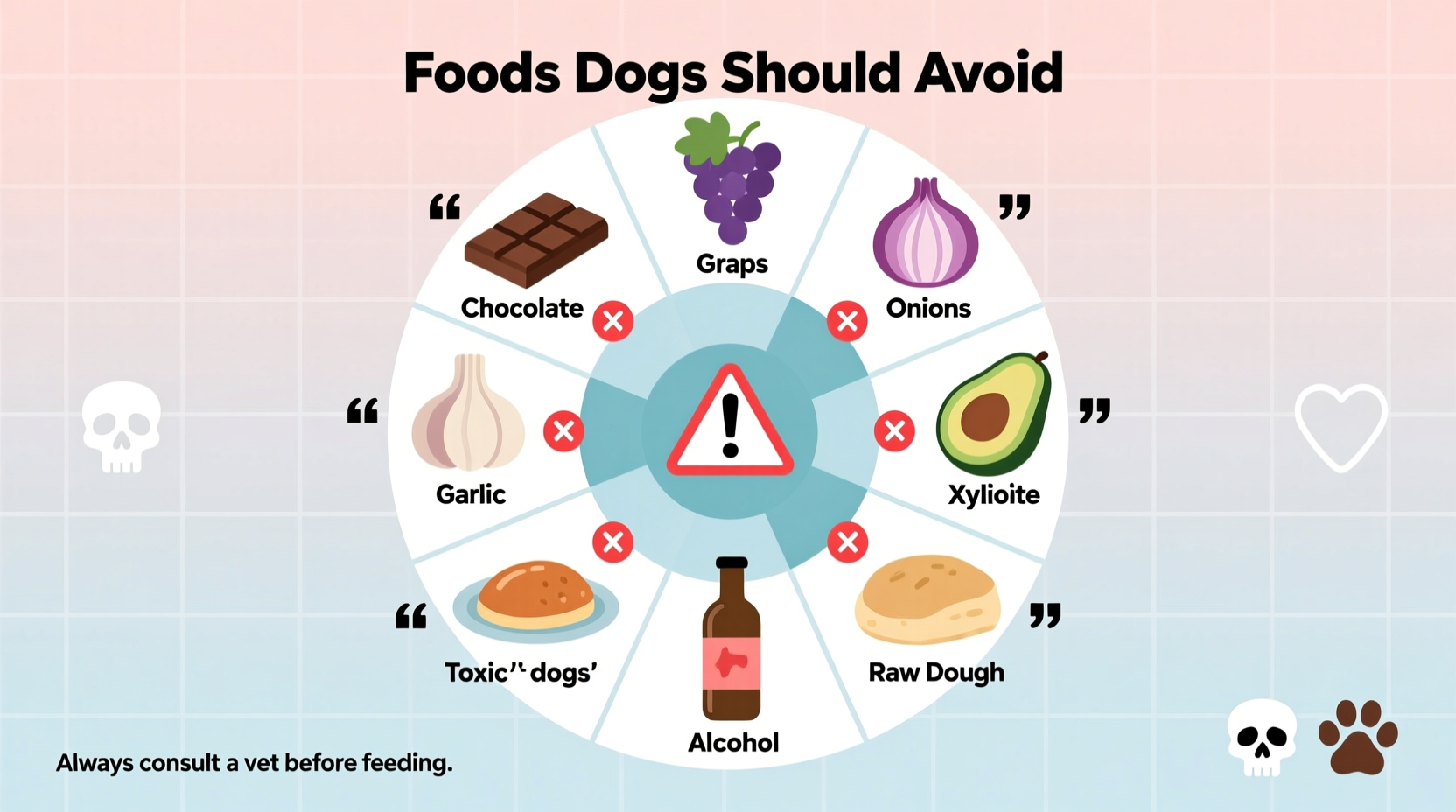Immediate Action: What to Do If Your Dog Eats Something Toxic
Time is critical when your dog ingests toxic food. Within minutes, certain substances can cause irreversible damage. First, remain calm—panicking won't help your pet. Immediately check what and how much your dog consumed. Note the time of ingestion and any symptoms appearing. Call your veterinarian or the ASPCA Animal Poison Control Center (888-426-4435) right away. Do not induce vomiting unless specifically instructed, as some toxins cause more harm coming back up.
Comprehensive Guide to Foods Dangerous for Dogs
While some human foods are safe for dogs in moderation, others pose serious risks. Understanding which foods are toxic—and why—is essential for responsible pet ownership. Let's examine the most common hazardous foods based on veterinary research and poison control data.
Chocolate: The Sweet Danger Every Dog Owner Must Know
Chocolate contains theobromine and caffeine, which dogs metabolize much slower than humans. Dark chocolate and baking chocolate are most dangerous due to higher theobromine concentrations. Just 1 ounce of baking chocolate per pound of body weight can be lethal. Symptoms appear 6-12 hours after ingestion and include vomiting, diarrhea, rapid breathing, and seizures. Smaller dogs face greater risks from even small chocolate amounts.
Xylitol: The Hidden Killer in Sugar-Free Products
This artificial sweetener, found in gum, candy, and baked goods, causes rapid insulin release in dogs, leading to hypoglycemia within 10-60 minutes. As little as 0.1 grams per kilogram of body weight can be toxic. Xylitol poisoning can progress to liver failure within hours. Always check ingredient labels on 'sugar-free' products—many pet owners don't realize how common xylitol has become in everyday items.
Grapes and Raisins: Unexpected Kidney Threat
The exact toxin in grapes remains unidentified, but even small amounts can trigger acute kidney failure. Just 0.32 ounces per pound of body weight (about 10-15 grapes for a 20-pound dog) may cause poisoning. Symptoms include vomiting within 24 hours, followed by decreased urine output. Some dogs show no reaction while others develop severe symptoms—never assume your dog is 'immune' to grape toxicity.
| Food Item | Danger Level | Minimum Toxic Amount | Primary Health Risk |
|---|---|---|---|
| Dark Chocolate | High | 0.3 oz per lb body weight | Cardiac arrhythmia, seizures |
| Xylitol | Critical | 0.1 g per kg body weight | Hypoglycemia, liver failure |
| Grapes/Raisins | High | 0.32 oz per lb body weight | Kidney failure |
| Onions/Garlic | Moderate | 0.5% of body weight | Hemolytic anemia |
| Alcohol | Critical | 0.59 oz per lb body weight | Respiratory failure |
Lesser-Known Toxic Foods You Might Overlook
Many everyday kitchen items pose hidden dangers. Avocado contains persin, which can cause vomiting and diarrhea. Macadamia nuts trigger weakness and tremors at just 2.4 grams per pound of body weight. Coffee and tea contain caffeine concentrations dangerous even in small amounts. Raw yeast dough expands in the stomach and produces alcohol during fermentation. Always keep these items securely stored away from curious paws.

Symptom Timeline: What to Watch For After Ingestion
Understanding the progression of symptoms helps determine urgency. Within 30 minutes: Drooling, vomiting, or agitation may indicate immediate toxin exposure. 1-6 hours: Diarrhea, lethargy, or abdominal pain suggest gastrointestinal distress. 6-24 hours: Increased thirst, decreased urination, or jaundice signal potential organ damage. 24+ hours: Neurological symptoms like seizures or collapse require emergency intervention. Document symptom onset times to share with your vet.
Preventing Accidental Poisoning at Home
Create a dog-safe kitchen with these practical steps: Store all medications and supplements in locked cabinets—many contain xylitol. Use pet-proof trash cans with secure lids. Train your dog the "leave it" command for dropped food items. When baking, keep dogs out of the kitchen—raw dough and sweeteners pose multiple risks. Educate family members and visitors about toxic foods, especially during holidays when餐桌 temptations increase.
When Human Food Is Safe for Dogs
Not all human foods are dangerous. Many dogs safely enjoy small portions of cooked chicken, carrots, blueberries, and plain pumpkin. Always introduce new foods gradually and in moderation. Avoid seasoning, sauces, or added fats. Remember that dogs have different nutritional needs than humans—treats should comprise no more than 10% of their daily calories. Consult your veterinarian before making significant dietary changes.
Myth vs. Fact: Common Misconceptions About Dogs and Food
Myth: "Milk is good for dogs." Fact: Most adult dogs are lactose intolerant—dairy causes digestive upset. Myth: "Bones are natural and safe." Fact: Cooked bones splinter easily, causing internal injuries. Myth: "If it's natural, it's safe." Fact: Many natural foods like grapes and mushrooms are toxic to dogs. Rely on veterinary guidance rather than assumptions about food safety.











 浙公网安备
33010002000092号
浙公网安备
33010002000092号 浙B2-20120091-4
浙B2-20120091-4